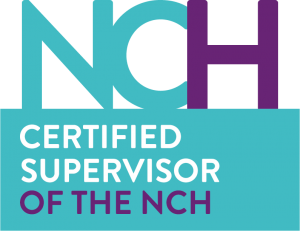Habit (and Addiction) Formation, Mechanism, and Pre-Eradication

In this article, I delve into the multifaceted realm of habits, investigating their nature, formation processes, pre-eradication strategies, and the underlying mechanisms that render them a potent force in shaping human behaviour. Habits are automatic routines acquired through repetitive actions, deeply ingrained in an individual's neural circuitry. Due to the very nature of human development, habits play an essential part in our behaviours and growth. We covet the skill and consistency of a tradesman. We wonder at the talents and driven behaviours of elite sportsman and women. We need the precision and attention of our surgeon. Habits are therefore created and are operative every day without one being aware of our considering them. For this reason, we make habits sound like ‘the bad guy’ and baulk at the destructive nature of ‘bad habits’. The intricate interplay between cue or triggers, routine, and reward leading to habit formation. Usually, eradicating habits necessitates cognitive restructuring and behaviour modification, often employing techniques like habit reversal therapy, however, with hypnotherapy one can engage a powerful strategy to inhibit habitual actions. Firstly, as a therapist, one must understand if the behaviour is habitual or an addiction? Habits and addictions are related but distinct concepts, and their power can vary depending on the context and individual circumstances. Let's explore the differences between habits and addictions. The potency of habits emanates from their neural consolidation, efficient cognitive processing, and influence on goal-directed behaviour. By understanding habits and addictions, individuals can wield their power to foster positive change.
Habits – These are behaviours that we perform automatically, often without conscious thought. They are developed through repetition and routine. Habits can be positive or negative, depending on the behaviour they involve. For example, exercising regularly, eating healthy foods, and practicing good hygiene are positive habits, while habits like nail-biting, procrastination, or excessive smartphone use might be considered negative habits. What makes society consider a habit bad, is it one which is socially unacceptable? I believe that a bad habit is one which has control over the individual.
Popularly, habits are generally considered less intense than addictions and not necessarily having the same level of compulsivity or negative consequences associated with them. With this thinking habits, while having a significant impact on our daily lives, are considered to be usually more manageable and able to be changed with relative ease through conscious effort and replacement with healthier behaviours. I disagree with this popular view in that habits are as powerful as addictions for reasons which I will address later in the article.
Addictions - are considered to be a more severe and complex phenomenon involving a compulsive need to engage in a particular behaviour. Due to their nature, they are associated with the consumption of substances, even in the face of negative consequences. Addictions often lead to a loss of control over one's actions and can significantly impact a person's physical, mental, and emotional well-being. Addictions are characterised by a physical dependence on a substance or which can lead to withdrawal symptoms when the addictive behaviour is reduced or stopped. Common examples of addictions include substance abuse such as alcohol, drugs, tobacco etc. If one considers an addiction to be associated with substances, where now does that leave behavioural addictions such as gambling, phone usage or gaming addiction. For now, let us consider that habits and addictions are one in the same – I will use the term habit for both.
Formation
Habits are intrinsic components of human behaviour, manifesting as automatic routines that significantly impact daily life. Rooted in both cognitive and subconscious psychology, habits encompass a range of activities from brushing teeth, driving, swimming to more complex professional tasks. Now we explore their formation and the underlying mechanisms that confer upon them their influential character.
Habits are cultivated through a cyclical process involving cue or triggers, routine, and reward. Eventually the cue triggers an automatic response which culminates in a reward that reinforces the behaviour. Repetition of this cycle leads to neurogenesis thus a consolidation and strengthening which in turn leads to the creation of an increasingly robust habit. Neuroplasticity and the basal ganglia play pivotal roles in the complete habit acquisition. This process is subconscious, driven absolutely by contextual and environmental cues and rewards. Habits wield considerable influence due to their neural consolidation. This consolidation streamlines neural processing, enabling swift and automatic execution of routines. Habits also interact with goal-directed systems, often guiding behaviour even in the absence of conscious intent. The efficiency of habitual processes is a manifestation of their potency, making them resilient to external influence.
Physical addiction, also known as physical dependence, occurs when the body becomes reliant on a substance or activity to function normally. As mentioned already, this physical dependence often leads to physical withdrawal symptoms when the substance or activity is reduced or stopped abruptly. Some of the differences between habits and addictions are tolerances and homeostatic imbalance. With continued use of addictive substances, the body can build a tolerance which means that with time, larger amounts of the substance are needed to achieve the same effects. Tolerance is a contributor to physical dependence as the body becomes accustomed to functioning with the substance present. The body attempts to maintain a state of homeostasis (balance). Prolonged exposure to an addictive substance can disrupt this balance, which then leads to the body adapting to the presence of the substance. When the substance is removed, the body struggles to readjust, resulting in physical and psychological distress.
Mechanisms
Neuroscientific research reveals that habits involve a shift from conscious goal-directed to habitual behaviour. The ventral striatum and prefrontal cortex initially guide goal-directed actions, while the dorsal striatum orchestrates habitual responses. The dopamine system reinforces behaviours associated with rewards, fostering habit development. Habits conserve cognitive resources by relegating routine actions to automatic processes. I would also suggest that the way a substance is taken into the body can influence the speed and intensity of its effects. For example, substances that are smoked or injected tend to produce more rapid and intense effects, which can increase the risk of addiction whilst the key and principal likelihood of habit formation is that of frequency. The more frequently a routine / substance is used and the more often it is repeated, the greater the likelihood of developing a habit / physical dependence. Regular, sustained use can lead to lasting changes in brain chemistry and function which creates a barrier to change.
Eradicating Habits and Addiction
Breaking ingrained habits necessitates cognitive restructuring and behaviour modification. Habit reversal therapy involves raising an acute awareness of cues, substituting alternative responses, and modifying and withholding rewards. Neural plasticity permits the rewiring of habit-associated neural circuits, albeit with effort and persistence. Yet, this never seems to be the case with hypnotherapy, whereby repaid change is administered with the treatments at the therapist’s disposal. There would seem to be a tension between common thinking in terms of addictions and habits and the difficulty and duration of change work. Many writers have considered habits, for example a popular book, “The Power of Habits” by Charles Duhigg, identify easily how habits are formed but when considering how habits are changed the author admits to there being “no specific steps guaranteed to work”. However, what I would be fully in agreement within this book is the suggestion that there is never an eradication of a habit, simply a replacement. This would also highlight the issue for easy return to the original patterns of behaviour in certain circumstances.
A Hypnotherapist’s View
When a client approaches the therapist for change work in the area of addiction or habit, I would posit that there are three areas of consideration: conscious; subconscious; physical.
If a client is not yet ready to change a habit, and there not recognising the need or necessity, i.e. the client has been ‘sent’ or is there ‘for someone else’ then there is little to be gained from conducting or attempting change work and is likely to be unsuccessful. The following questions may help ascertain this:
- Can you describe the habit and its impact on your life?
- What's driving your desire to change this habit now?
- What do you get from X [the habit]?
Providing that the conscious mind is ready and there are favourable responses, the next consideration is the need to consider the physical aspect. With hypnotherapy, the likelihood of 100% elimination of a habit or change in behaviour could lead to a devastating impact on health, and so asking the following could identify a physical dependency:
- Do you experience withdrawal symptoms when you try to cut down or stop using the substance?
- Have you made unsuccessful attempts to quit or cut down on your substance use?
- Have you experienced cravings or strong urges to use the substance?
Only once the prior areas have been considered should the therapist then move to subconscious change work treatments. Without consideration of both the physical and conscious, hypnotherapy would be ineffective and even life-threatening.
Conclusion
In conclusion, this exploration into the habits and their relationship with addictions reveals their profound influence on human behaviour and the potential for change. Habits, automatic routines formed through repetitive actions, hold a significant place in our lives. They emerge from a cyclic process of cue, routine, and reward, etching themselves into our neural circuitry. While habits and addictions are often distinguished, their power can be comparable, transcending mere repetition, indeed both possess the ability to shape our thoughts, actions, and well-being.
Habits, though often considered ‘more manageable than addictions’, wield a substantial force due to their efficient neural consolidation and interaction with goal-directed systems. Their role in daily routines can lead to both positive and negative outcomes, depending on the behaviour involved. On the other hand, addictions, characterised by compulsive engagement despite adverse consequences, exert a more profound grip on an individual's physical state. Behavioural and substance-related addictions share similarities, blurring the boundaries between the two.
In the realm of hypnotherapeutic intervention, a holistic approach considers the conscious, subconscious, and physical aspects of habits and addictions. Understanding an individual's readiness for change, their motivations, and potential physical dependencies forms a foundation for effective treatment. Hypnotherapy, a powerful tool in altering subconscious processes, can complement conscious efforts, potentially accelerating the transformation process.
In essence, habits and addictions occupy a complex continuum, interconnected through neural processes of human behaviour. Recognising their potency and the avenues for change enables us to harness their force for positive transformation. By delving into the intricate dynamics of habits and addictions, I have unveiled the potential for individuals to reshape their lives, fostering lasting and meaningful change. In essence, I therefore posit that the need to be a balance achieved between conscious, physical and subconscious before change can occur.





